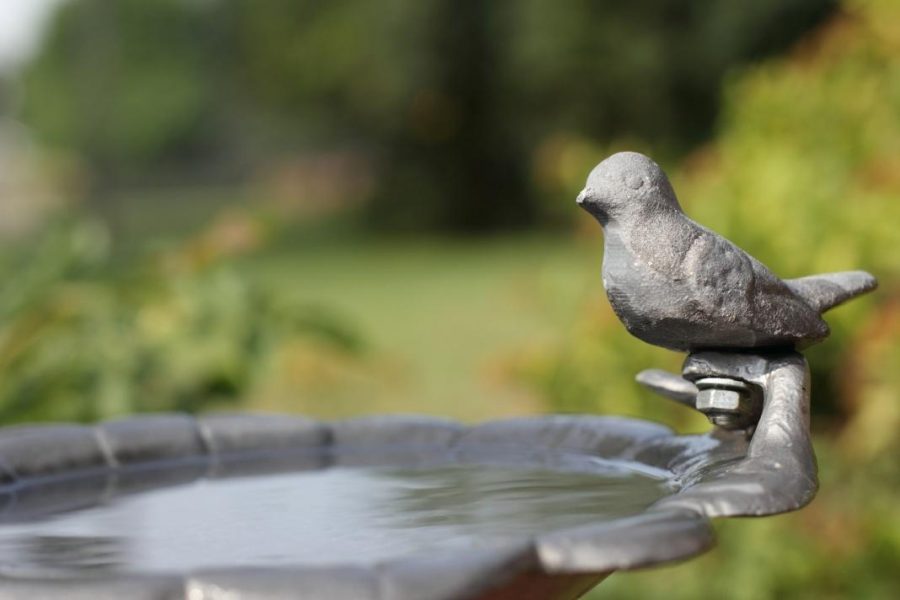Experts Urge Water Conservation Across Utah Heading into Summer
April 23, 2021
Utah is in a state of emergency due to another season of drought causing water restrictions and conservation campaigns across the desert state. This winter, Utah’s snowpacks were on careful watch since late February when they were showing 55% of normal capacity. Since then, it has increased to about 80% of where it should be.
Despite having received more moisture to bring the state near its normal watershed capacity, Darren Hess, COO of Weber Basin Water, says Utah is still in danger because 2020 was the driest year on record to date.
“Any runoff we do get out of the snow this year will basically soak into the soil and not run into the reservoir, so it will replenish soil moisture because it’s so dry and you just don’t get any water running into the reservoirs,” Hess said.
Weber Basin Water is just one of many to implement water restrictions. They announced earlier this month a 20% restriction on both agricultural and secondary water use, as well as an earlier end to irrigation season on Oct. 1, 2021.
Hess said these outdoor uses account for upwards of 65% of water use, in comparison to about 11% used domestically.
“People don’t actually realize how much water is used when they run their sprinkler system,” Hess said.
According to the Utah division of water resources, one sprinkler cycle per quarter-acre uses about 3,000 gallons of water. The average person uses 80-100 gallons of water per day. Therefore, one sprinkler cycle accounts for at least one month of water use per person.
Hess says because of this, the water saved from skipping a sprinkler cycle could go to the treatment plant so it can be treated for drinking water purposes where it can go much further. He says this is the best way to conserve water.
“Let the lawn stress and turn blue before you water it. Make it go deep to find water. Then, only irrigate when absolutely necessary. Don’t just set the irrigation timer and walk away,” Hess said.
He recommends using a smart irrigation controller to help actively manage outdoor water use. Weber basin water offers stream-flow and water-wise information and tips on their website. Other sources like Slow The Flow offer watering guides and irrigation water checks.
Paul Brooks is a University of Utah professor in geology, and the directory of the hydrology and water resources interdisciplinary program. He said regardless of water restrictions and drought, people should be considerate of their water use.
“The more water we use, the less goes to the Great Salt Lake,” Brooks said. “It’s about 10 feet lower than its long-term historical average right now.”
The Great Salt Lake provides a home ecosystem for a population of brine shrimp, fed by the lake’s production of algae and bacteria. It also provides a food source for millions of migratory birds each year, as well as a home for hundreds of bird species on the surrounding wetlands and islands. These birds share a home on the shorelines with a variety of reptiles and mammals.
“There are lots of important reasons for the Great Salt Lake to be there, both financial and health-wise,” Brooks said. “But the water is too saline for us to use it as a water supply, so the Great Salt Lake gets what’s leftover.”
The Great Salt Lake also serves as an air purifier, keeping down dust and debris in surrounding areas. Darren Hess stressed the importance of conservation for the sake of the lake, as it relies on snowpack water just like the people living here do. Otherwise, there is no outlet or source of water going to the lake.
“No one wants the lake to dry up and incur the negative impacts from having a dry lake. We want to preserve the lake into the future,” Hess said.
Slow The Flow offers additional ways to conserve water, including adjusting lawn mowers, checking for leaks, planting water-wise foliage, removing weeds, and strategically bathing pets.
For more information and facts about the Great Salt Lake, people can check out Friends Of Great Salt Lake and their conservation information brochure.








McCrank Resident • Apr 25, 2021 at 6:37 am
Earth Day includes water conservation.
In Muskoka it’s possible to cut your water use by 80% and save $1,000/year in water and sewer charges with extreme conservation.
Go south in the winter with the money you save.
Google “Oppose Bracebridge Sewers” for money saving ideas.
The city of Guelph gives massive rebates for water conserving devices. Every area should.
Not Muskoka.
Water and sewer charges here are $200/month. Highest in Ontario.